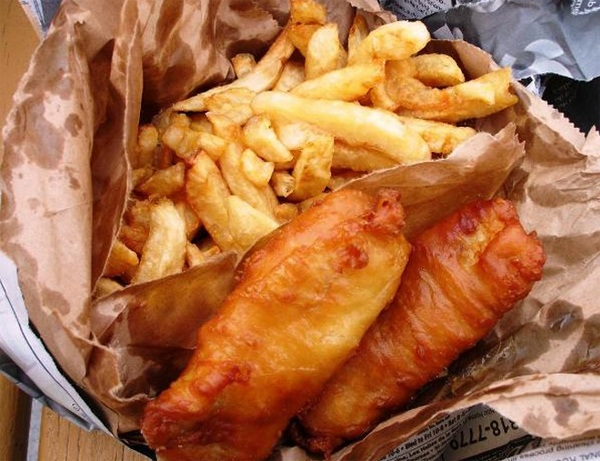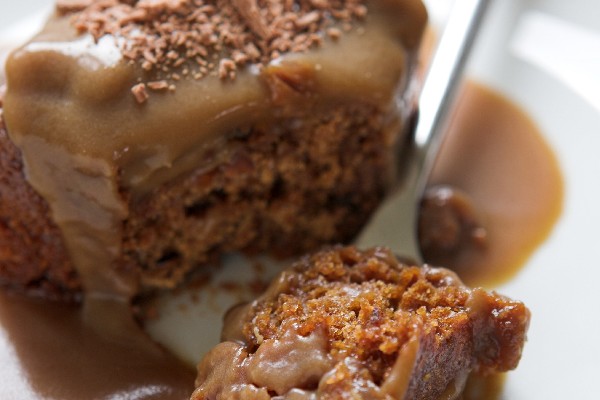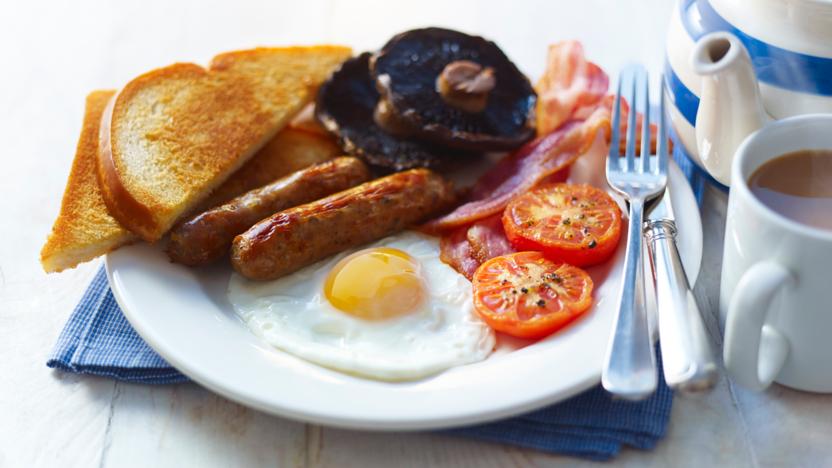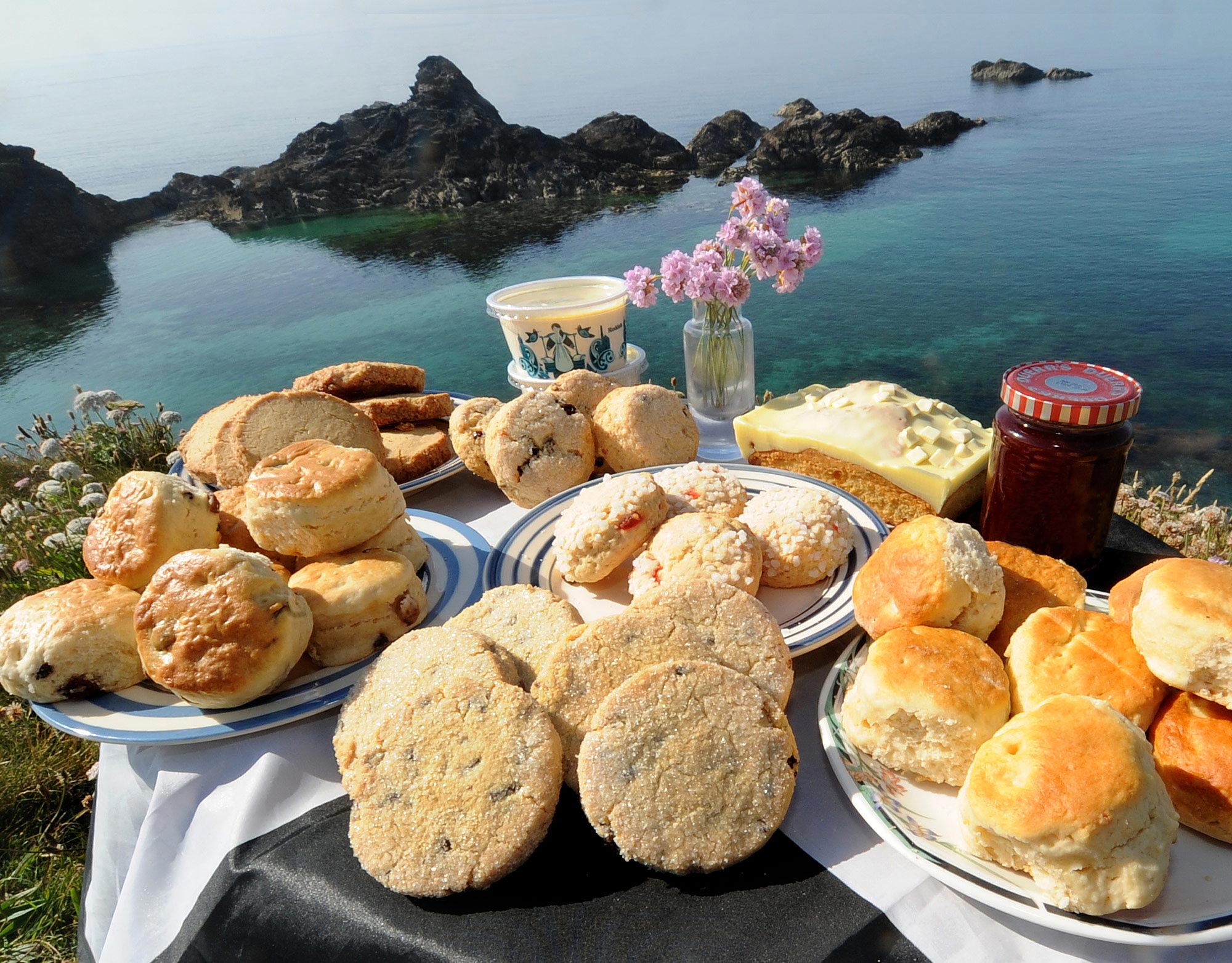British food, from savory to sweet
Heartwarming, filling and satisfying are the the three words to describe traditional British food, from the main course to dessert and snacks.
Fish ‘n’ chips
Brits have been eating fish and chips since the 19th century. This is street food, best eaten with the fingers, which used to be served wrapped in a piece of white paper and newspaper. These days the local chip shop or ‘chippie’ is more likely to hand it over in a polystyrene dish and with a little wooden fork.
 |
Photo: Travel CNN
The fish, usually cod, haddock or plaice, is dipped in batter and deep-fried; the chips are cut thicker than French fries (more like American ‘home fries’) and deep fried twice: once to cook the potato; second to crisp up the outside. Eat sprinkled liberally with salt and malt vinegar, and as an accompaniment perhaps a pickled egg or onion, a giant pickled cucumber called a ‘wally’ or some curry sauce.
Puddings
A British pudding is a dish, savory or sweet, that's cooked by being boiled or steamed in something: a dish, a piece of cloth, or even animal intestine. The earliest pudding in this sense of the word, were sausages; black pudding, a type of sausage made with pig's blood, is sometimes included in a traditional English breakfast.

|
British style pudding (source:kitchme.com)
Other puddings are sweet, such as spotted dish — a sort of steamed cake with currants that's barely sweet and, like many puddings, flavored with suet, or beef fat, rather than butter. Jam roly-poly, or roly-poly pudding, is traditionally steamed; it consists of a pastry made with suet, spread with jam, and rolled up.
Most of the traditional desserts, puddings, ‘sweets’ or ‘afters’, as they’re called in the UK, are not for those on a diet. In apple crumble, apples are covered with a crumbly flour, sugar and butter mixture and served with custard made from eggs, milk and vanilla. Bread and butter pudding is made from sliced bread interlaced with dried fruit and baked in custard. Spotted dick is a steamed suet pudding with dried fruit and served with custard. Trifle is a cold pudding made from layers of sherry-soaked sponge cake, fruit, custard and cream. Summer pudding is sliced bread layered with fruits, berries and fruit juice, and eaten with cream.
Pie and mash

Photo: BBC
No one in the UK would eat this breakfast every day but most people admit to indulging every now again. A ‘fry up’ may consist of fried or grilled bacon, a sausage or two, a fried egg, baked beans (tinned beans in a tomato sauce), grilled or fried tomatoes, a slice of fried bread (or toast), perhaps some slices of fried black pudding (sausage made from pig’s blood), and fried mushrooms – eaten in any combination, with a dollop of either brown sauce or tomato ketchup on the side. Other traditional English breakfasts to try are smoked kippers, scrambled egg on toast, kedgeree (a rice and smoked haddock dish from the days of the British Raj) – or just a bowl of cornflakes and milk.
Lancashire hotpot
 |
Photo: Felicity Cloake for the Guardian
This stew, which originated in the north west of England, is made from mutton or lamb and vegetables, topped with sliced potatoes. It’s simple to prepare and cheap to make, but cooked long and slow so that the meat is succulent and tender, it tastes delicious. It’s often eaten with pickled red cabbage or beetroot. Other similar stews are scouse from Liverpool, Irish stew from Ireland and cawl from Wales.
Cream tea
A cream tea (also known as a Devon cream tea, Devonshire tea or Cornish cream tea)is a form of afternoon tea light meal, consisting of tea taken with a combination of scones, clotted cream and jam. Traditionally a speciality of Devon and Cornwall, cream teas are offered for sale in tea rooms in those two counties, as well as in other parts of England and elsewhere in the Commonwealth.
There are regional variations as to how a cream tea should preferably be eaten.
The Devonian (or Devonshire) method is to split the scone in two, cover each half with clotted cream, and then add strawberry jam on top. The Devon method is also commonly used in neighbouring counties and other Commonwealth countries.
 |
Photo: Prima Bakery
With the Cornish method, the warm 'bread split' or a 'scone' is first split in two, then spread with strawberry jam, and finally topped with a spoonful of clotted cream. This method is also commonly used elsewhere, notably in London.
Although these distinctions on whether to apply the jam or the clotted cream to the scone first are still claimed by many, cream teas are served and enjoyed both cream first and jam first throughout both counties.
Scones are rarely buttered in commercially available teas. Traditionally it is important that the scones be warm (ideally, freshly baked), and that clotted (rather than whipped) cream and strawberry jam, rather than any other variety, are used. Butter is generally not included, and some sources advise that the tea should not be served with milk.
In Devon, an alternative to the scone found occasionally is the "Devon split" or "Chudleigh", lighter than a scone and smaller than a Cornish split. In Cornwall an alternative was traditionally a "Cornish split", a type of slightly sweet white bread roll rather than a scone. It is now rare to find this available commercially, even in Cornwall, but splits are still used by many Cornish families in their own homes.
Another variation to a cream tea is called "Thunder and Lightning", which consists of a round of bread, topped with clotted cream and honey./.
( VNF (compiled) )
Recommended
 Handbook
Handbook
Vietnam Moves Up 8 Places In World Happiness Index
 Handbook
Handbook
Travelling Vietnam Through French Artist's Children Book
 Multimedia
Multimedia
Vietnamese Turmeric Fish among Best Asian Dishes: TasteAtlas
 Handbook
Handbook
From Lost to Found: German Tourist Thanks Vietnamese Police for Returning His Bag
Popular article
 Handbook
Handbook
Prediction and Resolution for the Disasters of Humanity
 Handbook
Handbook
16 French Films To Be Shown For Free During Tet Holiday In Vietnam
 Handbook
Handbook
Unique Cultural and Religious Activities to Welcome Year of the Snake
 Handbook
Handbook



